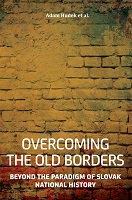The Historical Narration as a Political Programme. Analysis of Images of the Past in the Texts of the Slovak National Movement’s Programmes from 1848 and 1861.
The Historical Narration as a Political Programme. Analysis of Images of the Past in the Texts of the Slovak National Movement’s Programmes from 1848 and 1861.
Author(s): Karol Hollý
Subject(s): Political history, Nationalism Studies, 19th Century
Published by: SAV - Slovenská akadémia vied - Historický ústav SAV
Keywords: Slovak National Movement’s Programmes; Habsburg Monarchy;
Summary/Abstract: As it is known, in the revolutionary year of 1848 there were public agitations for civil equality in the Habsburg Monarchy. The revolutionary activists nominated themselves to be the leaders of national communities and on their behalf they presented their requirements. The requirement of national equality with a reference to the natural law of an individual results from a concept of the nation as a collective individuality. Some of the revolutionary leaders worked with this concept. It is evident that national communities were more fictive than real and their names in primary sources (in case of this text, it concerns the names: Slovaks and Magyars) are in fact references to the concepts of national ideologies and not the broad masses of that time’s population. This general statement also applies to the analysis of concepts of the nationalists speaking on behalf of the Slovak nation in the period after the constitutional experiments and after the dissolution of absolutism of the 1850s. The official documents presenting political programmes are the central source of knowledge about the concepts present in national ideologies. The main object of this study is the analysis of selected parts of two documents with political programmes - the first one from 1848 (The Demands of the Slovak Nation; hereinafter referred to as the Demands) and the second one from 1861 (The Memorandum of the Slovak Nation, hereinafter referred to as the Memorandum). These documents are necessary and essential elements of the Slovak nation’s ideology in the second half of the 19th century. In order to take into account the wider context I have chosen a few fragments of other historical texts of that time to complement the two central texts declaring political programmes. In addition to the above, a separate part of the study deals with the issue of historical reasoning about natural low and historical rights in the context of concepts existing throughout the Monarchy, and especially in the Slovak national movement in the 1860s.
Book: Overcoming the Old Borders. Beyond the Paradigm of Slovak National History
- Page Range: 45-58
- Page Count: 14
- Publication Year: 2013
- Language: English
- Content File-PDF

